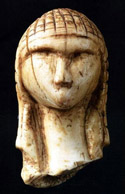Anthropology, Department of

Department of Anthropology: Faculty Publications
Document Type
Article
Date of this Version
2013
Citation
Published in Archaeology in the Digital Era: Papers from the 40th Annual Conference of Computer Applications and Quantitative Methods in Archaeology (CAA), Southampton, 26-29 March 2012. Edited by Graeme Earl, Tim Sly, Angeliki Chrysanthi, Patricia Murrieta-Flores, Constantinos Papadopoulos, Iza Romanowska and David Wheatley. Amsterdam University Press, 2013. Pages 118–130.
Abstract
This paper presents our research to develop a gesture-based 3D GIS system to engage the public in cultural heritage. It compares two types of interaction—device-based vs. natural interaction— and summarizes the beta-testing results of a 3D GIS tool for archaeology, called QueryArch3D, in which participants used device-based interaction (i.e. mouse and keyboard). It follows with a description of the gesture-based system—that we developed in response to these beta-tests. The system uses QueryArch3D and Microsoft’s Kinect to enable people use body movements (in lieu of keyboard or mouse) to navigate a virtual reality landscape, query 3D objects, and call up photos, videos, and text. The case study is the ancient Maya city of Copan—today an UNESCO World Heritage site in Honduras. The low cost and portable system is ideal for museum exhibitions even in developing countries and can be adapted for archaeological content throughout the world.
Included in
Archaeological Anthropology Commons, Communication Technology and New Media Commons, Digital Humanities Commons, Geographic Information Sciences Commons, Landscape Architecture Commons, Latin American Languages and Societies Commons, Other Computer Engineering Commons


Comments
Copyright © 2013 Computer Applications and Quantitative Methods in Archaeology (CAA) /Amsterdam University Press, Amsterdam. Used by permission.